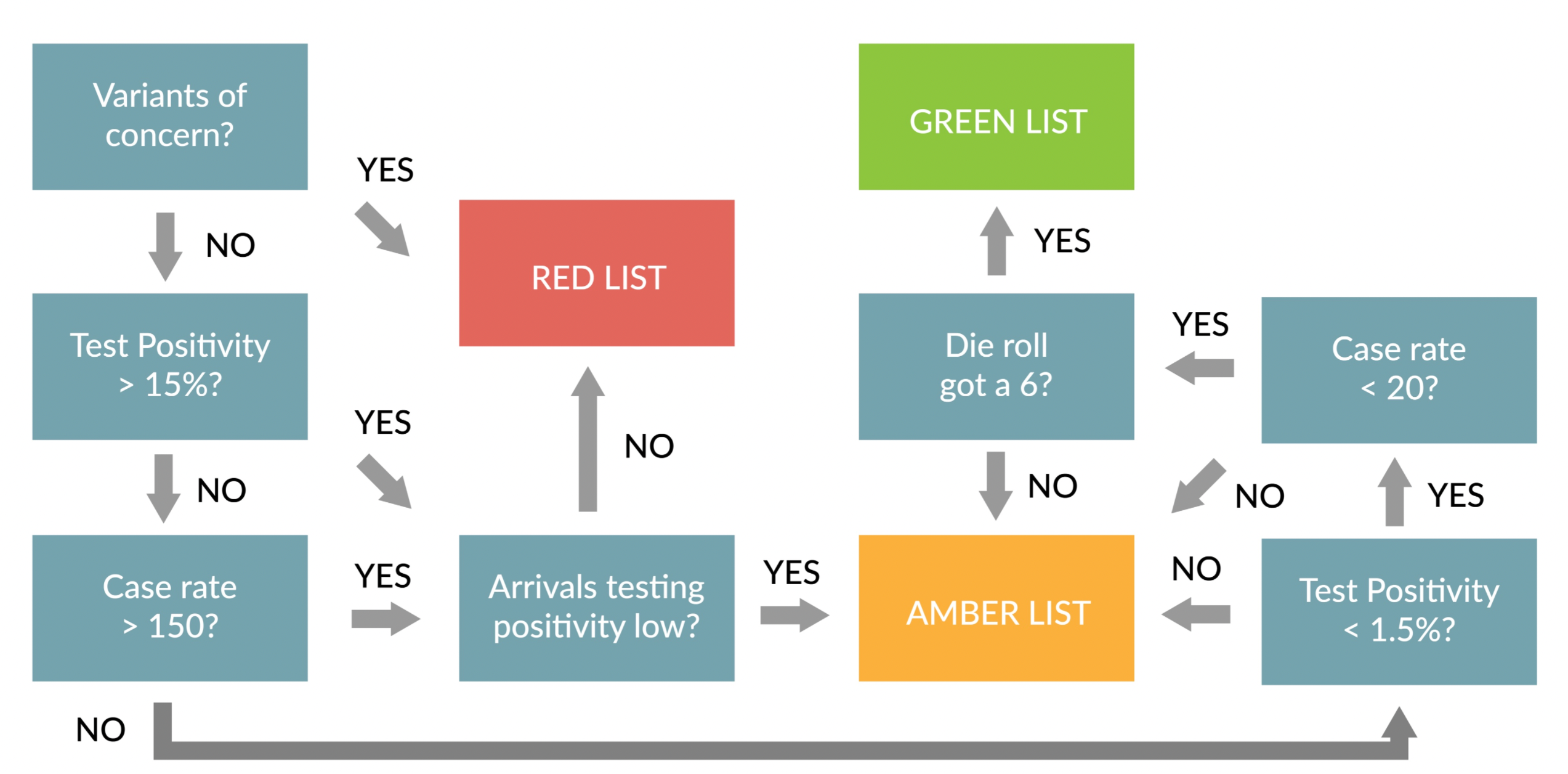France, Italy and 20 other nations should be on the green list, says analyst
Revealed: the government’s ‘green list’ and ‘red list’ criteria

Your support helps us to tell the story
From reproductive rights to climate change to Big Tech, The Independent is on the ground when the story is developing. Whether it's investigating the financials of Elon Musk's pro-Trump PAC or producing our latest documentary, 'The A Word', which shines a light on the American women fighting for reproductive rights, we know how important it is to parse out the facts from the messaging.
At such a critical moment in US history, we need reporters on the ground. Your donation allows us to keep sending journalists to speak to both sides of the story.
The Independent is trusted by Americans across the entire political spectrum. And unlike many other quality news outlets, we choose not to lock Americans out of our reporting and analysis with paywalls. We believe quality journalism should be available to everyone, paid for by those who can afford it.
Your support makes all the difference.After only one new nation, Malta, was added to the government’s “green list” of quarantine-free locations, a leading analyst has concluded that chance plays a significant role in allocating countries into “traffic light” categories.
Robert Boyle has “reverse engineered” the latest moves from the amber list to the green list and red list in a bid to calculate the government’s criteria.
But Mr Boyle, who is former director of strategy for BA’s parent, IAG, says he is baffled at why 22 European countries, including France and Italy, remain on the “amber list”.
In his blog for Gridpoint Consulting, he says there are two main problems. “Firstly, the government won’t say how it uses the data to reach its decisions – we have the data but don’t know the algorithm,” he writes.
“Secondly, the data is only provided for countries where classifications change. Most of the challenges from the industry are about why countries didn’t change classifications, in particular why so many countries seems to be stuck on amber or red.”
The two most important parameters are the overall case rate and test positivity – the proportion of tests that indicate Covid.
“Getting low scores on both metrics is a good indication that the real infection levels are low,” Mr Boyle writes. “A high score on either metric signals the opposite.”
For green list status, he calculates, the UK government wants to see a case rate at or below 20 and test positivity of 1.5 per cent or less. The location must also have a testing rate of 1 or more per 100,000, and at least 15 per cent of the population must be fully vaccinated.
Mr Boyle identifies 22 countries that meet all of those criteria, including the key holiday destinations of France and Italy.
Other continental European candidates include Austria, Bulgaria, the Czech Republic, Estonia, Hungary, Liechtenstein, Lithuania, Luxembourg, Moldova, North Macedonia, Poland, Romania, Slovakia,
From Scandinavia, Denmark, Finland and Norway all appear to qualify, Mr Boyle says.
Beyond Europe, Azerbaijan, Lebanon, Taiwan and Vietnam meet the criteria.
“The big thing that I cannot explain is why a whole raft of other countries are on the amber list, rather than the green one,” says Mr Boyle.
He discounts concern about variants, and speculates: “I’m sure the answer is politics somehow, but there doesn’t even seem to be any obvious political logic for why two apparently similar countries get classified differently.”

On a flow chart shared on social media, the analyst includes the box: “Die roll. Got a 6?” If so, the chart indicates, the country goes green. If not, it’s amber.
The transport secretary, Grant Shapps, rejects any criticism of the government’s evaluation of green list countries.
“There’s no circumstance in which there is not a scientific basis,” he told the BBC Today programme on Friday 25 June.
The evening before, when announcing one new addition to the green list – Malta – and several moves from amber to the “green watchlist”, Mr Shapps said: “It’s right that we continue with this cautious approach, to protect public health and the vaccine rollout as our top priority, while ensuring that our route out of the international travel restrictions is sustainable.”
For a country to appear on the red list, Mr Boyle predicts that a case rate of over 125 or test positivity of over 12.5 per cent – signifying one in eight tests reveals an infection – triggers red list status.
Turkey, which is the red list country with the highest number of UK visitors in a normal year, has a case rate of 50 and a test positivity of 2.7 per cent, way below the trigger points.
But Istanbul airport is now the leading international hub in Europe, and being a leading transit location was the reason for the UAE and Qatar joining the red list.
Join our commenting forum
Join thought-provoking conversations, follow other Independent readers and see their replies
Comments